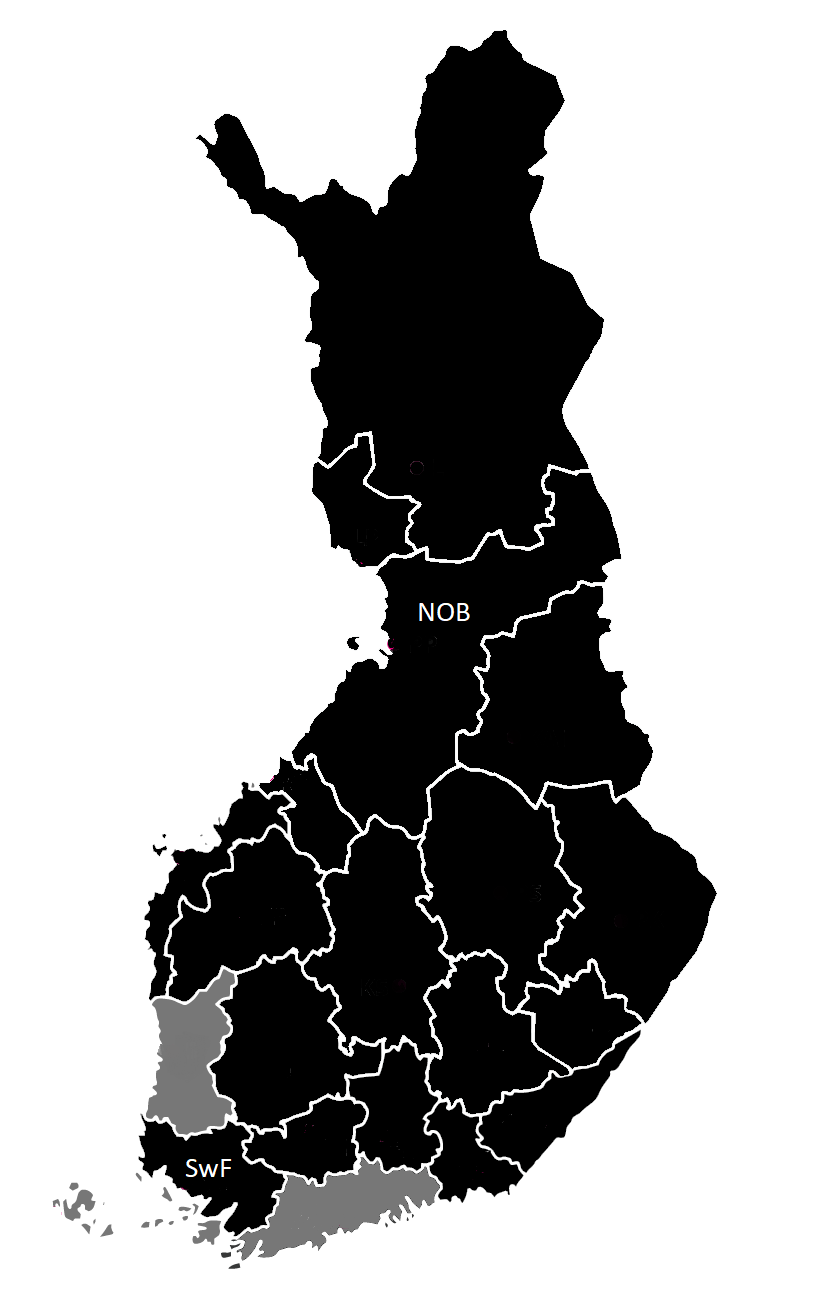Session Information
Date: Wednesday, September 25, 2019
Session Title: Epidemiology
Session Time: 1:15pm-2:45pm
Location: Les Muses, Level 3
Objective: To investigate the epidemiology and clinical picture of Wilson’s disease (WD) in Finland
Background: There are few robust studies on WD epidemiology and none at all from Finland. [1] Although the Finnish neuropathologist Ernst Homén was among the very first scientists to describe the condition [2] (well before Wilson [3]) the clinical impression is that the disease is seldom encountered by Finnish neurologists.
Method: All persons with a hospital admission or an outpatient visit recorded with ICD-10 code E83.0 in Finland in 1998-2017 were identified from mandatory national registries and data was gathered from clinical patient records.
Results: Having covered hospital districts encompassing 66% of the Finnish population [figure 1], we identified 29 patents (55% women) with WD of whom five had died before 31 December 2017 yielding a prevalence of 0.68/100’000 on that date in the searched area. Annual incidence in the study period was 0.02/100,000 inhabitants. Notably, 28% of patients were immigrants (from Iraq, Romania, Vietnam, Germany). Mean age at diagnosis was 19.8 years (SD 12.3, range 3-40) and age on prevalence date 31.5 years (SD 18.1, range 5-71) with no difference between genders for either (p=0.26 and p=0.093, respectively). Age of death was 51.3 years (SD 26.0, range 20-89). Neurological signs and/or symptoms were recorded at the time of diagnosis in 34% of patients (most frequently tremor, dysarthria, walking impairment and parkinsonism) while at least 38% had signs/symptoms attributable to liver disease. At least seven patients (24%) had been diagnosed symptom free as a proband’s sibling. The patients were almost invariably in the care of gastroenterologists or pediatricians. Penicillamine had been initiated for 17 patients, trientine for 7 and zinc (various compounds) for 18. Liver transplantation had been performed on four (13%) patients. Genetic confirmation had been obtained and recorded in 52% of cases: 8 compound heterozygotes, 6 homozygotes, 1 inaccurately described. The most common mutations were c.3886G>A (p.Asp1296Asn) and c.3207C>A (p.His1069GIn). One hospital district (Southwest Finland, inhabited by 9% of Finland’s population, SwF in figure 1) had made 31% of the diagnoses in the country and another (Northern Ostrobothnia, inhabited by 7% of the population, NOB in figure 1) had made another 17%.
Conclusion: WD is very rare in Finland and usually presents with dominant hepatic signs/symptoms or is found when a proband’s relatives are investigated.
References: [1] Gao J, Brackley S, Mann JP. The global prevalence of Wilson disease from next-generation sequencing data. Genet Med. 2018 Sep 26. doi: 10.1038/s41436-018-0309-9. [Epub ahead of print] [2] Homén EA. Eine eigenthümliche Familienkrankheit, unter der Form einer progressiven Dementia, mit besonderem anatomischen Befund. Neurologisches Centralblatt 17: 1–6, 1890 [3] Wilson K. Progressive lenticular degeneration: A familial nervous disease associated with cirrhosis of the liver. Brain 34: 295–509, 1912
To cite this abstract in AMA style:
J. Sipilä, M. Hietala, V. Kaasinen. Wilson’s disease in Finland [abstract]. Mov Disord. 2019; 34 (suppl 2). https://www.mdsabstracts.org/abstract/wilsons-disease-in-finland/. Accessed December 28, 2025.« Back to 2019 International Congress
MDS Abstracts - https://www.mdsabstracts.org/abstract/wilsons-disease-in-finland/

